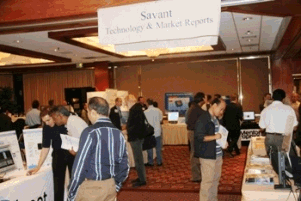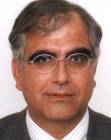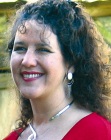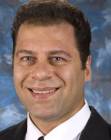|
| |
|
Keynotes
The 10th International System-on-Chip (SoC)
Conference, Exhibit, and
Workshops
The Theme for This Year’s Conference Is “Emerging Smart SoC Platforms
for a Connected World.”
|

|
|
If you
have any questions or need more information, please contact:
SoC@SavantCompany.com
or
949-851-1714 ― Thank
you!
|
|
a
|
|
|
|
|
|
|
|
Microsemi
Keynote

|
 Jim
Aralis, Chief Technology Officer (CTO), and Vice President of R&D. Jim
Aralis, Chief Technology Officer (CTO), and Vice President of R&D.
Keynote: “A New Paradigm: Disruptive SoC Design & Market Strategies.”
Bio: Jim Aralis has served as
chief technology officer and vice president of R&D for Microsemi since
January 2007. He has more than 30 years experience in developing custom
analog device and process technologies, analog and mixed-signal ICs and
systems, and CAD systems.
Jim played a key role in transitioning Microsemi to a virtually fabless
model, supporting multiple process technologies including, high voltage and
high power BCD/CMOS, high power high integration CMOS, GaAs, SiGe, IPD, RF
CMOS SoI, GaN, SiC, and several high-density packaging technologies.
From 2000 to 2007, Jim established and served as senior design director of
Maxim Integrated Product’s engineering center in Irvine, Calif. Before that,
he spent 7 years with Texas Instruments/ Silicon Systems as mixed-signal
design head and senior principal engineer. Additional experience includes 11
years with Hughes Aircraft Company in positions of increasing responsibility
including senior scientist. Jim earned a bachelor of science degree in
Math Applied Science and Physics and a master of science in electrical
engineering from UCLA. He holds 9 patents for circuit and system design.
Abstract:
TBD.
|
|
|
|
JPL
Keynote

 |
 Dr.
Reza Ghaffarian, Jet Propulsion Laboratory, California Institute of
Technology. Dr.
Reza Ghaffarian, Jet Propulsion Laboratory, California Institute of
Technology.
Keynote: "FPGA Packaging Trend and System Approach for Reliability."
Bio: Dr. Reza Ghaffarian has
more than 30 years of industrial and academic experience. For the last 19
years at NASA/JPL, he led R&D reliability and quality assurance activities
in advanced electronic packaging and has been a consultant resource for most
JPL projects including Mars Curiosity Rover. He received many award
including the NASA Exception Service Medal for outstanding leadership and
industrial partnership. He has authored more than 150 technical papers,
co-editor of a CSP book, 7 book chapters, and two guidelines. He serves as
technical Advisor/Committee to IPC, Microelectronics Journal, SMTA, IMAPS
and IEEE IEMT/CPMT. He received his Ph.D. in 1982 from University of
California at Los Angeles (UCLA).
Abstract:
Commercial-off-the-shelf column grid array packaging (COTS CGA) technologies
in high reliability versions are now being considered for use in a number of
National Aeronautics and Space Administration (NASA) electronic systems.
This presentation reviews technology of IC packaging developed to meet
demands of high processing powers, which come in area array packages. It
then provides a more detail discussion on using field programmable gate
array (FPGA), which enable programmer to modify software on-the-spot during
product use. The FPGAs come in area array packages now have more than
thousand solder balls/columns under package area not only need to be
correctly joined onto PCB; they also should show adequate system reliability
meeting thermo-mechanical requirements for application. In addition, recent
FPGA packages not only come with flip-chip with underfill exposed, they have
decoupling capacitors on the package substrates that further added
complexity. The key packaging trends and system reliability approaches with
test data will be also presented.
|
|
|
|
HP
Keynote
 |
 Dr.
Janice H. Nickel, Ph.D., Cognitive Systems Laboratory, Hewlett-Packard
Laboratories. Dr.
Janice H. Nickel, Ph.D., Cognitive Systems Laboratory, Hewlett-Packard
Laboratories.
Keynote:
“Making Memristors a Reality: Advances in Physical Understanding and Device
Integration.”
Abstract: Memristors are the
fourth fundamental circuit element which was predicted in the early 1970’s
and reduced to practice in 2008. Unlike capacitors or inductors, memristors
do not store charge or energy, but do store information. This quality makes
them a candidate for next generation memory technology, potentially
replacing Flash and DRAM, whose ability to scale to future technology nodes
is limited by the fact that they rely on stored charge. Because of the
ability to create highly non-linear memristive devices, this technology is
feasible for true crossbar memories –without requiring select transistors.
This will not only permit highly dense, stackable memory, it also will
enable integration of memristive memory with compute processors. In this
talk I will define memristive systems, describe their electrical properties
and how they differ from the three other fundamental passive circuit
elements. I will highlight properties of memristive devices, including
switching speed, switching energy and analogue operation. Advances in
fabricating memristors in fully CMOS compatible materials and processes, as
well as results from integrated CMOS + memristor crossbar structures from
the SK Hynix – HP Joint Development will be presented. Possible future
applications of the technology will be discussed.
TBD
Bio: Dr. Janice Nickel is a
Research Manager in the Cognitive Systems Laboratory at Hewlett-Packard
Laboratories. She obtained her BA in Physics, and PhD in Materials Science
and Engineering, from the University of California at Berkeley, and has
nearly 20 years industrial experience inventing, developing and transferring
innovative products for a DOW 30 company. She is currently leading the
memristor productization effort. In this capacity, she is directing HP’s
participation in the joint development of the technology with SK Hynix, as
well as creating proprietary CMOS compatible memristor fabrication
processes. This effort leverages a her previous experience in the
development of MRAM crossbar memory technologies. Prior to working on
memristors, Dr. Nickel invented a unique programmable drug delivery platform
– “Smart Drug Delivery” – which repurposes HP’s mature ink jet technology to
address unmet pharmaceutical market needs. She catalyzed multiple business
units in disparate geographic locations to develop component modules which
she integrated into a proof-of-concept demonstrator. She created a business
plan, attracted investors, and transferred the technology to the startup
Janisys, Ltd. The Smart Drug Delivery technology won the 2007 Silicon Valley
Business Journal’s Emerging Technology Award in Medical Devices, and was
recognized in Popular Science’s “Best of 2008” in the Health category.
Janisys is currently developing the technology in partnership with a major
pharmaceutical company. Dr. Nickel has 45 U.S. Patents awarded, over 40
scientific papers published, and numerous invited presentations.
|
|
|
|
Altera
Keynote
 |
 Dr.
Mike Peng Li, Fellow, Altera Corporation. Dr.
Mike Peng Li, Fellow, Altera Corporation.
Keynote: "FPGAs and the Era of Silicon Convergence."
Abstract: Customer demand and
the economies of the industry are driving a trend towards “silicon
convergence.” Each new silicon process node allows chip designers to put
more components-processors, accelerators, memory, and peripheral
controllers, high-speed I/Os and photonic ICs-onto a single chip. More
components means more capability, higher performance, higher throughput,
lower power, and less area and space which are in high demand by system
designers developing tomorrow’s cutting edge technologies. 3D and photonic
enabled SoC FPGAs are leading the way in this trend and delivering
customizable functionality and hardware acceleration for wired and wireless
communications, computing, storage, military, industrial and automotive
applications.
Bio: Dr. Li has been with
Altera Corporation since Sept., 2007 and currently is an Altera Fellow. He
is a corporate expert and adviser, as well as CTO office principal
investigator, on high-speed link/standards, SERDES architecture, electrical
and optical signaling, silicon photonics, optical FPGA, high-speed debug and
test, jitter, noise, signal and power integrity. He was the Chief Technology
Officer (CTO) for Wavecrest Corporation from 2000-2007. Dr. Li is a Fellow
of IEEE, and an affiliated professor at the Department of Electrical
Engineering, University of Washington, Seattle. He holds a Ph.D. in physics
(1991), an M.S.E (1991), in electrical and computer engineering and an M.S.
in physics (1987), from the University of Alabama, Huntsville. He also holds
a B.S (1985) in space physics from the University of Science and Technology
of China. He was a Post Dr. and then a research scientist at the University
of California, Berkeley (1991-1995).
|
|
|
|
UCI
Keynote
 |
 Dr.
Payam Heydari, Nanoscale Communication Integrated Circuits (NCIC) Labs,
University of California Irvine. Dr.
Payam Heydari, Nanoscale Communication Integrated Circuits (NCIC) Labs,
University of California Irvine.
Keynote: “Terahertz and
Millimeter-Wave Imaging: New Frontiers of Electronics."
Abstract: This keynote speech
gives comprehensive overview of Terahertz and millimeter-wave (including
both active and passive) imaging and their enabling and exciting
applications. The speech then reviews current efforts to push the design of
integrated circuits to operate at millimeter-wave and Terahertz frequency
range. The talk covers daunting challenges in designing Terahertz building
blocks and active/passive imaging systems at various levels of design
hierarchy including system- and architecture-level down to the circuit- and
device-levels.
Bio: Payam Heydari (S’98–M’00–SM’07) received the B.S. and M.S. degrees
(with highest honors) in electrical engineering from the Sharif University
of Technology in 1992 and 1995, respectively. He received the Ph.D. degree
in electrical engineering from the University of Southern California in
2001. Dr. Heydari is currently a Full Professor of Electrical Engineering
and also School of Engineering Faculty Vice Chair. His research interests
include the design of high-speed analog, radio-frequency (RF), and
mixed-signal integrated circuits. He is the (co)-author of one book and 100
journal and conference papers. The Office of Technology Alliances at UCI has
named Dr. Heydari one of 10 outstanding innovators at the university. Dr.
Heydari is the co-recipient of the 2009 Business Plan Competition First
Place Prize Award and Best Concept Paper Award both from Paul Merage School
of Business at UC-Irvine. He is the recipient of the 2010 Faculty of the
Year Award from UC-Irvine's Engineering Student Council (ECS), the 2009
School of Engineering Fariborz Maseeh Best Faculty Research Award, the 2007
IEEE Circuits and Systems Society Guillemin-Cauer Award, the 2005 NSF CAREER
Award, the 2005 IEEE Circuits and Systems Society Darlington Award, the
2005 UCI’s School of Engineering Teaching Excellence Award, the Best Paper
Award at the 2000 IEEE International Conference on Computer Design (ICCD),
the 2000 Honorable Award from the Department of EE-Systems at the University
of Southern California, and the 2001 Technical Excellence Award in the area
of Electrical Engineering from the Association of Professors and Scholars of
Iranian Heritage (APSIH). He was recognized as the 2004 Outstanding Faculty
at the UCI’s EECS Department. Dr. Heydari’s paper entitled: Design of Ultra
High-Speed Low-Voltage CMOS CML buffers and Latches, published in October
2004 issue of the IEEE Trans. on VLSI Systems, was ranked first among top
downloaded articles in 2007. His research on novel low-power multi-purpose
multi-antenna RF front-ends received the Low-Power Design Contest Award at
the 2008 IEEE Int'l Symposium on Low-Power Electronics and Design (ISLPED).
He is the co-founder of ZeroWatt Technologies, Inc., a fabless semiconductor
startup in low power mixed signal integrated circuits design. Dr. Heydari is
a Guest Editor of IEEE Journal of Solid-State Circuits. He currently serves
on the Technical Program Committees of Compound Semiconductor IC Symposium (CSICS)
and International Symposium on Low-Power Electronics and Design (ISLPED). He
was an Associate Editor of the IEEE Transactions on Circuits and Systems –
part I from 2006 to 2008. He was a Technical Program Committee member of the
IEEE Custom Integrated Circuits Conference (CICC), and International
Symposium on Quality Electronic Design (ISQED).
|
|
|
|
|
|
|
|
Selected
Technology
&
Media
Sponsors |
|
* * * * * * *
Back To The Main SoC
Conference Page
Copyright © 2003-2012 by Savant Company Inc. All
Worldwide Rights Reserved.
Wafer images courtesy of Intel Corporation, Micron Technologies & Altera Corporation.
| |
|